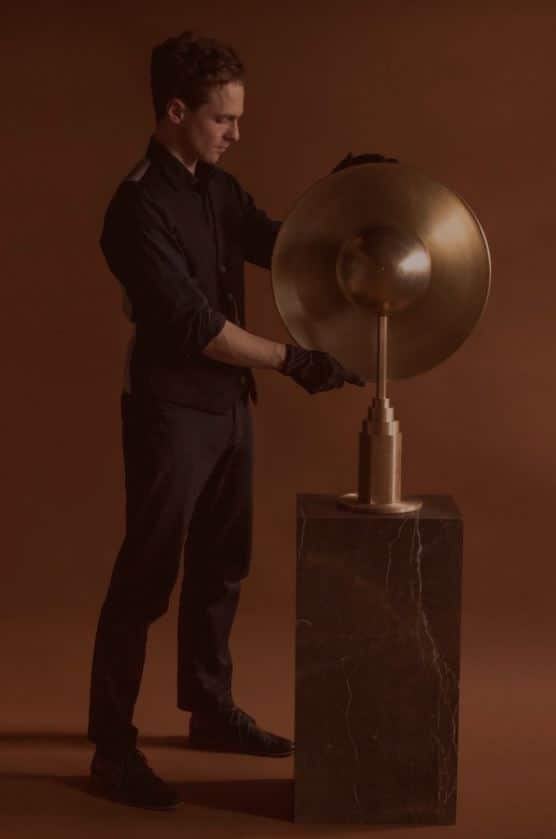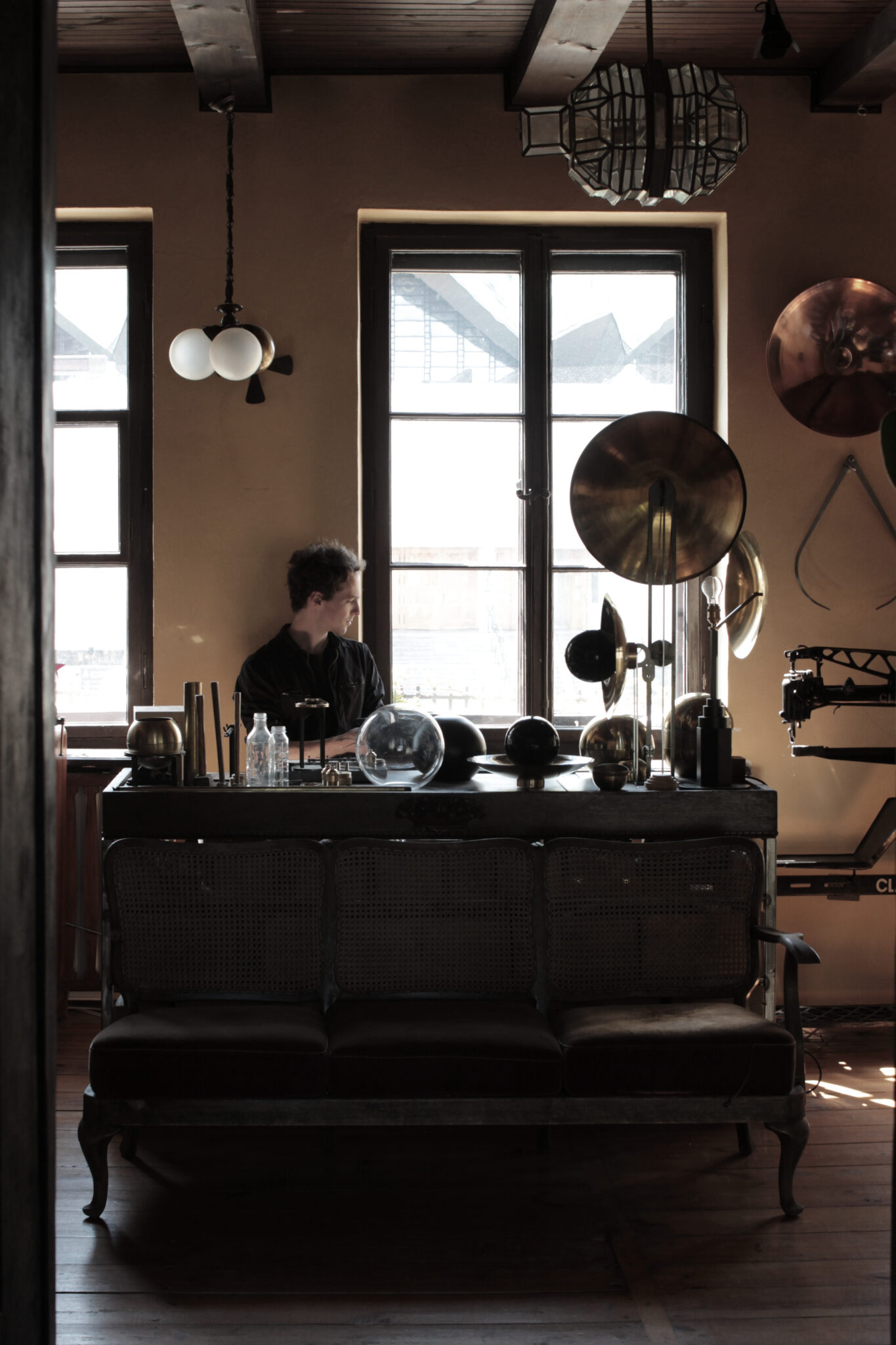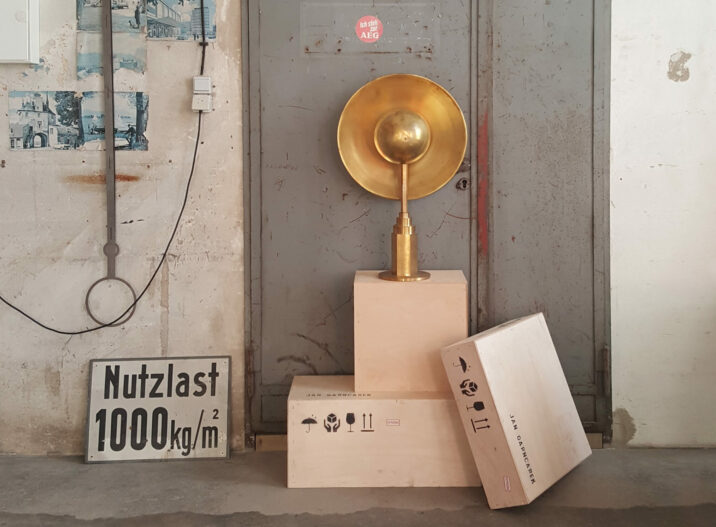
JAN GARNCAREK
1. Where were you born and where are you from ?
I was born in Warsaw, Poland.
2. What is your first memory connected to the art world ?
My first deeper reflection about art came to me after I visited the Zachęta Art Gallery in high school, where Krzysztof Wodiczko was exhibited. The exhibition was about war trauma. The artist displayed an interview with an older woman who experienced it. The footage showed the women’s hands and was displayed on a wall of a huge building, it was really scaled up. I noticed that the slight movements of her hands express a range of feelings and emotions. It moved me deeply and I understood that showing a story form a different point of view can tell it in multiple ways and emphasize its various aspects. The experience taught me to perceive the world multidimensionally.
3. Have you always worked in the art/design field ?
90 % of the time I design. Very often I carry out individual orders. Soon however, I plan to concentrate on expanding my collection of lamps and furniture.
4. What led you to the design creation ?
My family has a tradition of creating furniture and small thing for fun. Becoming a designer was a natural result. To be honest I’ve been doing this since ever and I’m deeply thankful it’s my profession.
5. How would you describe your creative process and it influences ?
Objects evoke my emotions. When I start the design process, I search for an emotion I want to feel while interacting with the object. Later I consider which artistic means should I use to evoke the emotions. Designing is a process in which things, spaces, forms and colors I experienced prevail. Creativity means processing these perceived experiences. As a result, I strive to travel, learn and experience a lot.
6. Could you describe a typical day of your work ?
I don’t have a typical work routine. Every day differs and depends on where I am at the moment. Some days I spend sitting in a Berlin coffeeshop and designing conceptually, on others I weld a piece of furniture I’ve been working on. There are days when I’m very disciplined, especially if I’m carrying out bigger orders. I fall into pace of work that enables me to coordinate the production and to send everything on time. I try to take care of all aspects of my life. I go to the gym and meet my friends regularly. I also work a lot on my private projects.
7. Why did you choose the specific materials you work with ?
I work mostly in brass. It’s a material that works great in processing and has fascinated me since childhood. In my grandfather’s workshop there were ammunition cartridges. He used to make various things from them. I believe it influenced my style a lot. I like the color of brass, the color of light it reflects. I find it mystical and I want my lamps to have the exact quality.


8. What are the technical particularities of your creations ?
The quality matters for me. I want the user to recognize the refinement of every detail. I use more material than necessary. Every part of the lamps I designed is machined by hand from a complete brass sheet. Since I turned 10, I’ve practiced sport shooting. It’s a family tradition. A firearm has always been a quality itself. I’m fascinated by its perfectly tailored mechanisms. I transfer the quality into all my designs.
9. What advices could you give to beginning artists who would like to create sculptural design works ?
First, they should forget all the rules and manners they learned in art and design schools. They should do everything in their own way, follow their unique gut feeling. You must believe in yourself and derive from your individual experiences. Following this path only can result in original maybe even disruptive creations
10. If your works had to belong to a design movement, in which one would you define it ?
I’ve always been fascinated by brutalism. This style is very close to me. I would only soothe it a little.
11. What designers have influenced you ?
Many designers influenced the way I perceive design. I studied art and design history. There was a time when I believed nothing would ever surprise me again. But then my girlfriend Ewelina Mąkosa took me to a restaurant in Barcelona. – Artte designed by Lázaro Rosa-Violán which very artfully fuses contemporary and former European architecture. It was the first time I’ve seen an arrangement where these two styles didn’t compete but complement each other. As if they’ve always coexisted. It was the moment I understood that I don’t have to abandon my fascination with historical design, that I can create the space in my own way.
12. What contemporary designers do you appreciate ?
Later, after visiting Artte I started to look for other coffee houses, restaurants and retail spaces designed by Lázaro Rosa-Violána. Very soon I started to value his art and craft most. I also admire Joseph Dirand and the vibe of Parisian Monsieur Bleu she created.
13. What contemporary artists (in any kind of art) have you been inspired by ?
One of the famous sculptors that inspires me is Anish Kapoor. His works create surrealistic spaces. Another, less known artist that inspires me is Przemek Ostaszewski and his minimalistic installations.
14. If you had to summarize your creations in one word or sentence, what would it be ?
Let’s create a world we want to look at.
15. Is there anything you would like to add ?
In one of the previous questions I advised young artists to start believing in themselves. I was lucky to meet a person who believed in me before I believed in myself. It was my girlfriend Ewelina Mąkosa who never fails to inspire me. I owe her so much.
Proust Questionnaire with very short answers (one or a few words) :
(The Proust Questionnaire is a set of questions answered by the French writer Marcel Proust. Other historical figures who have answered confession albums are Oscar Wilde, Karl Marx, Arthur Conan Doyle, Stéphane Mallarmé, Paul Cézanne…)
1. What is your idea of perfect happiness?
Design the world around you.
2. What is your greatest fear?
Loneliness and misunderstanding.
3. What is the trait you most deplore in yourself?
Difficulty in learning foreign languages
4. What is the trait you most deplore in others?
Submission to schemes
5. Which living person do you most admire?
Anja Rubik
6. What is your greatest extravagance?
I like to dress festive when I’m alone at home or when I go to the store.
7. What is your current state of mind?
I am very focused on new projects.
8. What do you consider the most overrated virtue?
Maturity
9. What is the quality you most like in a man?
Resourcefulness
10. What is the quality you most like in a woman?
A gentle look
11. Which words or phrases do you most overuse?
“professionalism”
12. Which talent would you most like to have?
Ease of making new connections
13. If you could change one thing about yourself, what would it be?
More patience with other people
14. What do you consider your greatest achievement?
Running my own business in Poland
15. If you were to die and come back as a person or a thing, what would it be?
I could be reborn as a birch, somewhere in the forests of Eastern Europe.
16. Where would you most like to live?
Venice, Brussels or Lviv
17. What is your most treasured possession?
My grandfather gave me a brass level which he had got from his father. I’m very sentimental.
18. What do you regard as the lowest depth of misery?
Insincerity
19. What is your favorite occupation?
Carpenter
20. What is your most marked characteristic?
Straightness
21. What do you most value in your friends?
Cooperation
22. Who are your favorite writers?
Arkadija and Borys Strugacki
23. Who is your hero of fiction?
The title hero from the film by Andrej Tarkovsky Stalker from 1979
24. Which historical figure do you most identify with?
Grigory Potemkin
25. Who are your heroes in real life?
Surgeon. Similarly to my profession, they struggle with manual work. My mistakes only cost me, and their mistakes have a much greater consequence. I admire them for their strong psyche.
26. What are your favorite names?
Izabela, Cornelia, Petra
27. What is it that you most dislike?
Stupidity and competition
28. What is your greatest regret?
I regret that I did not make a few mistakes at an earlier age.
29. How would you like to die?
Like my grandfather, among my family and relatives.
30. What is your motto?
The future is now.

